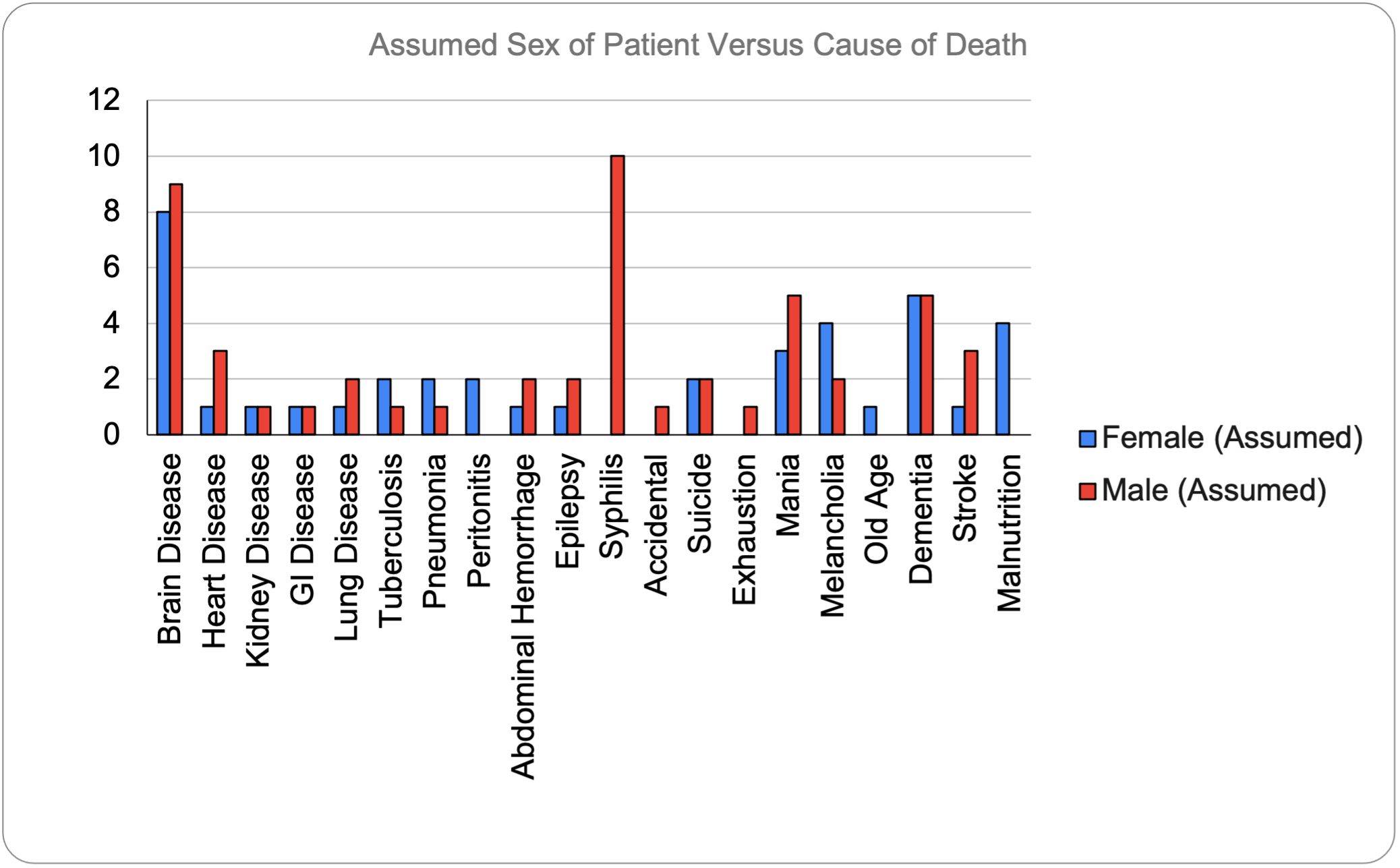Causes of Death 1885 - 1895
A multitude of causes of death were given for patients who died in Friends Asylum. The most common, “brain disease,” covered a variety of similar conditions. While it is difficult to map modern understandings of illness onto historical diagnoses, brain disease likely referred to conditions such as Alzheimer’s and Parkinson’s diseases. Other common diseases of the brain, like dementia and stroke, are listed separately. In late 1800s psychiatry, brain disease was understood as a medical cause of insanity, whereas other diagnoses, such as mania or melancholia, were understood as deriving from the patient’s social circumstances and environment rather than the body.[1]
Other causes of death, like syphilis and tuberculosis, were commonplace in pre-1940s America, but have been near-eradicated with the widespread availability of antibiotics in richer nations. Unfortunately, infectious bacterial diseases still pose a significant risk in many regions of the world: in 2019, an estimated 1.2 million people worldwide died of tuberculosis related illnesses.[2] Some of the other causes listed in the Asylum’s records, such as heart disease and suicide, continue to claim high numbers of lives in 21st century America.[1]
Many of the causes of death will be familiar to current readers, but there are a few that do not have modern equivalents. For example, it is unclear to a present-day audience what is meant by “exhaustion” as a cause of death, but to the late nineteenth century physicians, that description would have had a clear and comprehensible meaning. While death and its causes may seem to be biological and unchanged by the passage of time, the language used to describe them and the ways they are understood by medical professionals and society generally are constantly shifting.
[1] Annual Report, Friends Hospital Records, Quaker and Special Collections, Haverford College, Haverford, Pennsylvania.
[2] World Health Organization, “Global Tuberculosis Report 2020,” World Health Organization, October 15, 2020, https://www.who.int/publications-detail-redirect/9789240013131. xiii.
Gender and Causes of Death
For the most part, there is no strong correlation between gender and cause if death.[1] Most causes of death have an identical or near identical number of male and female patients attributed to them; while there are several that appear to affect only one gender, such as peritonitis or exhaustion, the number of patients who died of those causes is so low as to make any patterns meaningless. The primary exception is syphilis. From March of 1884 to March of 1886, ten deaths were attributed to syphilis. Only brain disease claimed more lives. But whereas brain disease killed approximately equal numbers of male and female patients, syphilis appears to have exclusively affected men. This is likely due to several reasons: first, syphilis infected 19th century men in larger numbers than their female peers, mainly due to the greater sexual freedom (and thus higher numbers of sexual partners) afforded to men.[2] Additionally, syphilis was an extremely stigmatized disease due to its sexually transmitted nature, and stigma surrounding it was even greater for women, for whom standards of sexual purity were far higher. The stigma may have led families of patients or the Asylum itself to avoid attributing illness and death of female patients to syphilis.
[1] For an explanation of the website’s use of the terms gender and sex as well as binary language, see the binary language disclaimer.
[2] M Tampa et al., “Brief History of Syphilis,” Journal of Medicine and Life 7, no. 1 (March 15, 2014): 4–10.

